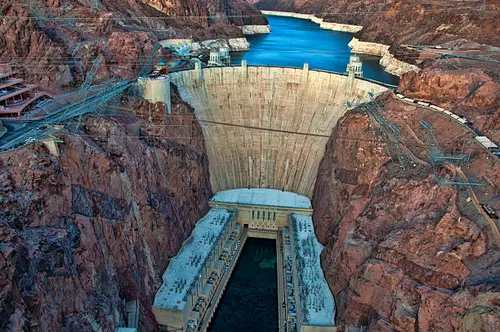Today, governments around the world enact many public works programs. They build parks, dams, bridges, carvings of politicians faces on the side of a mountain (Mt. Rushmore), or whatever they think will pass politically. The politicians always have their reasons to justify their projects. They might claim that they are creating jobs and stimulating the economy. Or that the free-market was incapable of providing this good/service. Whatever the politicians claim, public works do nothing to improve the economy. They are a great example of the broken window fallacy in action. (To learn more about the broken window fallacy click here.) When all the effects of public works programs are analyzed their shortcomings become undeniably clear.
Public Works Create Employment
Supporters of public works love to claim that they are creating employment and stimulating the economy. They follow the Keynesian belief that spending money is the best way to stimulate the economy. However, this is an illusion. Public works do not create any new jobs and they do not stimulate the economy. The only thing they do is divert productive forces, like labor and raw materials, into other areas. This is because we can’t get something for nothing. The government can’t just wave a magic wand and create resources. The public works must be paid for.
So, who pays for public works programs? The taxpayers, of course. The government will either tax them directly to get the money, or they will inflate the money supply, which is effectively an indirect tax. Therefore, the public will have less money to spend on other goods/services. Therefore, other industries in the private sector must shrink because less money will be being spent on their goods/services. This means that private businesses must lay off workers and shrink their production. So, in the end, there is no net gain in employment. The public works programs have only diverted workers into a different line of work.
Similarly, the economy as a whole has not benefited; there is no net gain. The public works have not stimulated anything, they have only transferred productive forces to a different area. When the government creates a new park people celebrate because the new park is a good that can be seen. However, people fail to think of all the goods/services that were not created because resources were diverted into the creation of the park because they are not seen. It is the broken window fallacy. Public works do not create new employment; they only divert it from the private sector harming private businesses in the process. Therefore, private businesses can be identified as the first loser in the public works scheme.
Public Works Supply Things the Free-Market Can Not
Another common argument for public works is that they can provide goods/services that the free-market can not. It is true that public works often create projects the free-market would not have created, but this is not because the free-market can’t create these projects. In the free-market, the goods/services created by public works are often not profitable ventures. Therefore, businesses have no incentive to create them. Why are they not profitable? It is simply because there is not enough demand or, in other words, not very many people wanted the project in the first place. The average joe would rather spend his money on something else he wanted more, but, alas, the government has forced him to spend his money by taxation on public works. Therefore, we have identified the second loser in the public works scheme, most taxpayers.
Undoubtedly, there are some public works that are in demand like roads, so why doesn’t the free-market provide them today? In most cases, the free-market is not allowed to supply the particular good or service. The government will have granted itself a monopoly over the particular industry. The government uses its coercive power to stop its competitors from operating. After the government maintains this monopoly for a long period of time it often becomes inconceivable for private businesses to offer the good/service because of tradition. This further solidifies the fallacy that the free-market can’t provide the service. However, the free-market is capable of providing any good/service as long as its in demand.
Conclusion
Public works programs are a superb example of the broken window fallacy applied to real life. There are two losers in the public works scheme. One, the taxpayer who gets a good/service he desired less than something else. Two, the private business that will no longer get the taxpayer’s money. The winner in the public works scheme is often a special interest group that will reap large rewards from the program. The special interest group pays politicians to enact the program for them at someone else’s expense. Therefore, public works actually result in a net loss for society. They divert resources into less desired avenues for the benefit of a select few people. The common arguments that justify public works programs are myths to get the public on board with the programs. Public works programs are one of the many government programs analogous to the broken window fallacy. When one examines the effect on all groups the fallacy becomes clear.

Another interesting read.